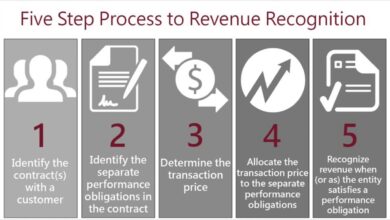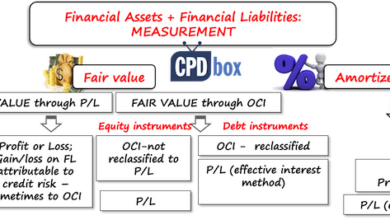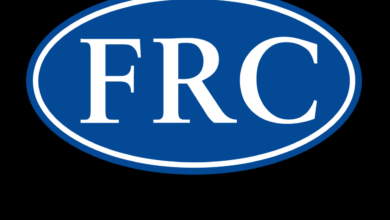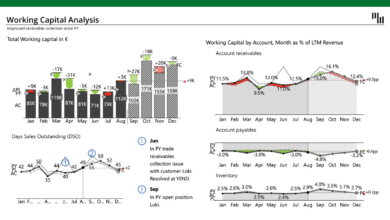
US Private Companies Expenses A Deep Dive
US private companies expenses encompass a wide range of financial considerations, from meticulous financial reporting to optimizing expense management. Understanding the intricacies of these expenses is crucial for navigating the complexities of the private sector in the US. This in-depth exploration covers everything from regulatory compliance to industry-specific nuances, equipping you with the knowledge to manage and control expenses effectively.
This comprehensive guide delves into the specifics of financial reporting, expense management systems, various expense categories, tracking and reimbursement processes, control strategies, legal and regulatory considerations, industry-specific aspects, and crucial policies and procedures. We’ll explore the nuances of each area, providing practical examples and insights to help you make informed decisions.
Financial Reporting and Compliance
Navigating the financial reporting landscape for private US companies can be complex, but understanding the specific requirements is crucial for maintaining compliance and financial health. This involves a thorough grasp of various accounting methods, standards, and tax implications. Careful documentation and validation procedures are also key to ensuring accurate reporting and minimizing potential tax liabilities.Private companies in the US, unlike publicly traded ones, don’t have the same stringent reporting requirements.
However, compliance with relevant regulations is still essential. This article will delve into the specifics of financial reporting for private companies, highlighting the nuances that set them apart from public companies.
Financial Reporting Requirements for Private US Companies
Private US companies are generally not subject to the same stringent reporting requirements as publicly traded companies. They are, however, still required to adhere to Generally Accepted Accounting Principles (GAAP) or other acceptable accounting frameworks. The level of detail and frequency of reporting can vary depending on factors like the company’s size, industry, and the nature of its activities.
Accounting Methods and Standards Applicable to Expenses
Private companies can utilize various accounting methods for recording and reporting expenses, including cash basis and accrual basis accounting. Cash basis accounting recognizes expenses when cash is paid, while accrual basis accounting recognizes expenses when they are incurred, regardless of when cash is paid. The choice of method can significantly impact the reported financial picture. The accounting standards followed should be clearly documented.
Compliance with GAAP is often necessary for external reporting and for internal decision-making.
Key Differences in Expense Reporting: Public vs. Private US Companies
| Characteristic | Publicly Traded Companies | Privately Held Companies |
|---|---|---|
| Reporting Frequency | Quarterly and annually | Annually, or as needed for financing or compliance |
| Auditing Requirements | Independent audits by external auditors | Often no external audit, unless required by lenders or investors |
| Disclosure Requirements | Extensive disclosures required by SEC | Limited disclosure requirements |
| Expense Detailing | High level of detail on expenses | Can be less detailed, depending on the company’s needs and internal policies |
| Financial Statement Format | Specific SEC-mandated formats | Flexibility in formats, but still needs to adhere to GAAP |
The table highlights the significant differences in reporting requirements. The level of detail, frequency, and need for external verification differ considerably.
Tax Implications for Expense Categories
Different expense categories have varying tax implications for private US companies. For example, deductions for office supplies, travel expenses, and employee compensation are governed by specific rules. Understanding these rules is crucial for maximizing tax benefits and ensuring compliance.
- Office Supplies: Reasonable and ordinary business expenses are deductible. Documentation is key to proving the expense’s business connection.
- Travel Expenses: Deductible expenses must be directly related to business activities. Records must demonstrate the purpose, dates, location, and costs.
- Employee Compensation: Compensation must comply with federal and state labor laws. Proper documentation of salary, benefits, and withholdings is essential.
Careful record-keeping is vital for accurate tax reporting.
Documentation and Validation of Expenses for Tax Purposes
Proper documentation and validation procedures are critical for ensuring accurate tax reporting and minimizing potential liabilities. This involves maintaining meticulous records of all expenses, including receipts, invoices, and supporting documentation.
- Receipts: Detailed receipts showing the date, amount, and description of the expense are crucial.
- Invoices: Invoices for goods or services provide evidence of the transaction.
- Supporting Documents: Supporting documents, like contracts or expense reports, can further validate expenses.
By meticulously documenting expenses, private companies can significantly enhance the accuracy of their tax reporting.
Expense Management Systems and Tools

Tracking and managing expenses is crucial for any private US company, especially as they grow and become more complex. Effective expense management systems not only streamline the process but also contribute to better financial control and compliance. This post delves into the various expense management software solutions available, highlighting their features and functionalities, and how they can enhance your expense tracking and reporting.
Popular Expense Management Software Solutions
Numerous software solutions cater to the diverse needs of private US companies. Some prominent players include Concur, Expensify, and others. Each platform offers unique features and functionalities, making it crucial to evaluate which one best suits your company’s specific requirements. Understanding the various features and how they impact expense management will guide your decision-making process.
Features and Functionalities of Expense Management Systems
Expense management software typically provides a comprehensive suite of tools for various aspects of expense tracking and reporting. These tools often include:
- Automated expense tracking: The software automatically captures expense data from receipts, credit cards, and other sources. This automation eliminates manual data entry, saving time and reducing errors.
- Receipt management: Systems often allow for digital receipt capture and storage, making it easier to manage and retrieve receipts for auditing purposes.
- Policy management: Setting and enforcing company policies related to expense reimbursements is simplified. This feature ensures compliance with internal guidelines and external regulations.
- Real-time reporting: Companies can gain insights into expenses by generating reports in real-time. These reports can be customized to provide specific information.
- Integration with accounting software: Seamless integration with existing accounting systems facilitates the transfer of expense data, eliminating manual entry and potential errors.
- Expense categorization: The software can automatically categorize expenses according to predefined rules, simplifying reporting and analysis.
- Mobile expense submission: Employees can submit expense reports easily via mobile apps, improving efficiency and speed.
Streamlining Expense Tracking and Reporting with Expense Management Tools
These systems streamline expense tracking and reporting by automating various processes, reducing manual intervention, and providing detailed insights. This automation can significantly decrease administrative overhead and increase the accuracy of expense data. For example, automated receipt capture and expense categorization eliminate the need for manual data entry and analysis, reducing the likelihood of human error.
Benefits and Drawbacks of Different Expense Management Software Categories
The table below summarizes the advantages and disadvantages of different expense management software categories, offering a comparative overview.
| Software Category | Benefits | Drawbacks |
|---|---|---|
| Cloud-Based Solutions | Accessibility from anywhere, scalability, reduced IT infrastructure costs, and enhanced collaboration | Potential for security concerns if not properly managed, reliance on internet connectivity, and vendor lock-in |
| On-Premise Solutions | Greater control over data security and IT infrastructure, customized solutions, and potential for tighter integration with existing systems | Higher upfront costs, greater IT maintenance requirements, and limited scalability |
| Mobile Expense Reporting Apps | Ease of use for employees, faster expense submission, and real-time expense tracking | Potential for data security risks if not properly secured, limited functionality compared to desktop software, and dependency on mobile devices |
Key Criteria for Choosing an Appropriate Expense Management System
Several key criteria guide the selection process. Consider the following factors:
- Budget: Determine a realistic budget for the software and associated implementation costs. Evaluate pricing models and consider factors like user limits and features included.
- Scalability: Assess the software’s ability to adapt to future growth and changing needs. Consider how many users the system can support and whether it can be scaled up as the company expands.
- Security: Prioritize data security measures and ensure compliance with relevant regulations. Evaluate the system’s security protocols and data encryption methods.
- Integration: Evaluate the software’s compatibility with existing accounting and financial systems. Smooth integration minimizes data entry errors and improves data accuracy.
- User-friendliness: Ensure the system is intuitive and easy to use for all employees, minimizing training time and maximizing adoption rates.
Expense Categories and Types

Navigating the world of business expenses can feel like a maze, but with a clear understanding of categories and types, it becomes manageable. Proper categorization is crucial for accurate financial reporting, tax compliance, and insightful analysis of your company’s spending habits. This section delves into the common expense categories for US private companies, providing examples and detailed documentation guidelines.Understanding the nuances of each category allows for more precise tracking and reporting.
This, in turn, helps you make better financial decisions, identify areas for potential cost savings, and maintain compliance with all applicable regulations.
Common Expense Categories for Private US Companies
Categorizing expenses logically is vital for accurate financial reporting. This allows for easy identification of trends, cost analysis, and better budgeting. Following a standardized system ensures consistent record-keeping and reporting across all departments.
- Salaries and Wages: This category encompasses employee compensation, including base salary, overtime pay, and benefits. Precise record-keeping is essential, including details about the employee’s role, hours worked, and payment method.
- Payroll Taxes: This category includes all taxes related to employee compensation, such as Social Security, Medicare, and federal/state income taxes. Payroll software and accurate record-keeping are essential for avoiding errors.
- Office Supplies: This encompasses all materials used in the office, such as paper, pens, printer ink, and other stationery items. Maintaining a system for tracking inventory is beneficial for forecasting needs and controlling costs.
- Travel Expenses: This includes costs associated with business trips, such as airfare, lodging, transportation, and meals. Thorough documentation with receipts is critical for reimbursement and compliance.
- Entertainment Expenses: This encompasses costs related to business-related events, like conferences, client dinners, and social gatherings. Documentation should include a clear business purpose and a detailed description of the event.
- Marketing and Advertising Expenses: This includes costs associated with promoting the business, such as advertising campaigns, website development, and social media marketing. Clear connections between marketing activities and resulting benefits should be tracked.
- Professional Fees: This category encompasses expenses for professional services, including legal, accounting, consulting, and design fees. Contracts and invoices are essential for documentation.
- Rent and Utilities: This covers the costs of office space, including rent, electricity, gas, water, and internet. Maintaining a record of payments and utility bills is crucial.
- Insurance Premiums: This encompasses insurance costs, such as property, liability, and employee insurance. Maintaining a record of policy details and payment receipts is critical.
Employee Expense Types
Proper classification of employee expenses is crucial for accurate accounting and compliance. A clear understanding of each expense type and associated documentation requirements ensures smooth processing and prevents potential issues.
- Travel Expenses: These expenses include airfare, accommodation, transportation, and meals while traveling for business. Strict documentation is necessary, with supporting receipts for each item. A detailed itinerary and purpose of travel are also essential.
- Entertainment Expenses: These expenses are incurred for business-related events, such as client dinners, conferences, or industry gatherings. A clear business purpose and a detailed description of the event are necessary for approval and documentation.
- Supplies Expenses: These expenses include office supplies, stationery, and other consumables used in the workplace. A clear inventory management system is beneficial for tracking and preventing waste.
Expense Documentation and Approval
A robust expense reporting system is critical for accuracy and compliance. Clear documentation policies ensure all expenses are properly categorized, supported by receipts, and approved by authorized personnel.
| Expense Type | Description | Typical Supporting Documentation |
|---|---|---|
| Travel | Airfare, accommodation, transportation, meals | Airline tickets, hotel receipts, transportation receipts, meal receipts |
| Entertainment | Client dinners, conferences, industry events | Event tickets, receipts for meals and beverages, confirmation of business purpose |
| Supplies | Office supplies, stationery, and consumables | Invoices or receipts for purchases, inventory records |
Proper documentation is critical for expense reimbursement and compliance with internal policies and tax regulations.
Expense Tracking and Reimbursement Processes

Staying on top of expenses is crucial for any private US company. A well-defined expense tracking and reimbursement process ensures accurate financial records, compliance with tax regulations, and smooth operational flow. This process also helps prevent fraud and mismanagement of company funds.Expense tracking is a multifaceted process that begins with the initial expenditure and culminates in reimbursement. It’s vital to maintain meticulous records throughout each step to ensure accuracy and traceability.
Expense Tracking Steps for Private US Companies
Proper expense tracking involves meticulously documenting every expenditure. This includes the date, description, amount, and supporting documentation for each expense. Companies must maintain a record of all receipts, invoices, and other supporting documents to facilitate accurate accounting and reporting. This process ensures compliance with IRS guidelines and internal company policies. Companies should implement clear procedures to categorize expenses, ensuring consistency and accuracy in reporting.
Expense Report Submission Procedure
Expense reports should be submitted within a specified timeframe, typically within 24-48 hours of the expenditure. This prompt submission allows for timely processing and minimizes delays in reimbursement. The report should clearly list each expense, providing detailed descriptions and supporting documentation. Using a standardized expense report form will improve accuracy and reduce errors.
Importance of Timely Submission and Approval
Prompt submission and approval of expense reports are essential for maintaining financial control. Delayed reports can disrupt the cash flow, potentially impacting the company’s ability to meet its financial obligations. Additionally, timely approvals facilitate quicker reimbursement, which helps maintain employee morale. Delayed reimbursements can cause employee dissatisfaction.
Expense Reimbursement Flowchart
Start ----> Expense Incurred
|
V
Record Expense ----> Gather Supporting Documents
|
V
Complete Expense Report ----> Submit Expense Report
|
V
Review and Approve Expense Report ----> Process Reimbursement
|
V
Issue Payment ----> Reimbursement Received
|
V
End
Different Reimbursement Methods
Several methods exist for reimbursing employees for business expenses.
Choosing the most appropriate method depends on company policies and employee preferences. Common reimbursement methods include:
- Direct Deposit: This method is efficient and secure. Funds are directly deposited into the employee’s bank account, eliminating the need for physical checks. This process is quick and convenient for both the employee and the company.
- Check: Checks are a traditional reimbursement method. They are generally less secure than direct deposit and require more time for processing. They are sometimes preferred for small or infrequent expenses, and may be required by some companies in certain situations.
Companies should carefully consider their employees’ preferences and the associated costs and security factors when choosing a reimbursement method.
Expense Control and Optimization Strategies
Controlling and optimizing expenses is crucial for the financial health of any private US company. Effective expense management not only reduces costs but also frees up capital for investment, expansion, and innovation. A well-defined strategy ensures that spending aligns with business objectives, minimizing waste and maximizing return on investment. This involves a proactive approach, not just reactive cost-cutting.
A comprehensive expense control and optimization strategy requires a multifaceted approach. It involves careful analysis of spending patterns, identification of areas for potential savings, and the implementation of practical measures. By understanding and addressing both recurring and one-time expenses, companies can achieve significant cost reductions without jeopardizing operational efficiency.
Expense Reduction Strategies
Careful analysis of historical expense data and identification of areas where costs can be reduced without compromising operational efficiency are crucial. This often involves a combination of strategies, including negotiation with vendors, exploring alternative providers, and adopting more efficient processes. Identifying unnecessary expenses is equally important.
- Negotiating with Vendors: Companies can often secure better pricing by negotiating contracts with suppliers. This requires proactive communication and a willingness to explore different options. For example, a company that consistently buys large quantities of office supplies can negotiate bulk discounts with suppliers. Alternatively, they might consider switching to a cheaper provider without compromising the quality of the products.
- Exploring Alternative Providers: Companies should regularly review their relationships with providers for various services. This includes utilities, telecommunications, and software subscriptions. Researching alternative providers, evaluating their offerings, and comparing prices can lead to substantial cost savings. For example, switching to a more affordable internet provider, or a cloud-based storage solution, can save money compared to traditional options.
- Adopting Efficient Processes: Streamlining processes and eliminating unnecessary steps can reduce operational costs. For example, automating tasks like expense reporting can save significant time and resources. Implementing digital tools for expense tracking can also reduce manual errors and streamline the reimbursement process.
Cost-Saving Measures in Various Expense Categories
Identifying cost-saving measures within specific expense categories is essential. This includes scrutinizing travel expenses, office supplies, and technology costs.
- Travel Expenses: Companies should implement policies that encourage cost-effective travel choices, such as using public transportation or carpooling. Negotiating corporate travel rates with airlines and hotels can also yield savings. For instance, utilizing online travel agencies with competitive rates, or choosing lower-cost accommodations while maintaining acceptable standards.
- Office Supplies: Companies can implement a policy of only purchasing supplies as needed, and avoiding unnecessary stockpiling. Prioritizing reusable items and promoting a culture of responsible consumption can further reduce costs. Implementing a system to track inventory levels and only ordering when supplies are low can be a useful strategy.
- Technology Costs: Companies should evaluate the necessity of their technology investments. Exploring cloud-based solutions, which can often be more cost-effective than on-premises software, is often beneficial. Utilizing open-source software or free alternatives where appropriate can be a good strategy.
Expense Forecasting and Budgeting
Accurate expense forecasting and budgeting are essential for financial planning and control. Predicting future expenses allows companies to prepare for potential financial challenges and capitalize on opportunities.
- Developing an Expense Forecasting Model: A well-defined model based on historical data, market trends, and company projections can aid in accurate expense forecasting. For example, using historical spending patterns for similar periods and adjusting for expected growth or changes in market prices.
- Creating a Comprehensive Budget: A comprehensive budget should include all anticipated expenses. This budget should align with the company’s overall financial goals and objectives. Regular reviews and adjustments to the budget are crucial to adapt to changing circumstances.
Impact of Expense Optimization on the Company’s Bottom Line
Expense optimization directly impacts the company’s bottom line by improving profitability and increasing cash flow. By reducing unnecessary expenses, companies can allocate resources to more profitable ventures.
Significant expense optimization can translate to substantial increases in profit margins and overall financial performance. This directly enhances the company’s competitiveness and long-term sustainability.
Legal and Regulatory Considerations
Navigating the complex landscape of US business law is crucial for any private company. Understanding the legal and regulatory frameworks surrounding expenses is paramount for maintaining compliance and avoiding potential pitfalls. Proper expense management not only safeguards your company’s financial health but also protects it from costly legal battles and reputational damage.
Expense reporting, if not meticulously managed, can lead to severe consequences. Companies must ensure their practices align with all applicable laws and regulations to avoid penalties, fines, and legal action. This section delves into the key legal and regulatory considerations for private US companies, highlighting potential risks and crucial compliance strategies.
Legal Frameworks Governing Expenses
US private companies operate within a web of federal, state, and industry-specific regulations. These regulations encompass tax laws, accounting standards, and employment regulations, all of which impact expense reporting. Federal tax laws, for instance, dictate how companies can deduct business expenses and what records they must maintain.
Implications of Non-Compliance
Non-compliance with expense regulations can have severe financial and legal repercussions. Penalties for inaccurate or fraudulent expense reports can range from significant fines to criminal prosecution. Misclassified expenses or improper documentation can result in audits and investigations. Additionally, reputational damage can severely impact a company’s standing in the marketplace. The financial burden of legal battles and reputational damage can be substantial.
Potential Legal Risks Associated with Improper Expense Reporting
Improper expense reporting exposes companies to several legal risks. These include violations of tax laws, fraud, and potentially civil or criminal charges. Misrepresenting expenses for personal gain, a common form of fraudulent reporting, can result in severe legal consequences. The potential for civil lawsuits from disgruntled employees or third parties due to perceived misrepresentation is another important consideration.
Relevant Case Studies
Numerous cases demonstrate the importance of accurate expense reporting. One example involves a company that misclassified personal expenses as business expenses, leading to significant tax penalties and an investigation. Another example illustrates how a lack of proper documentation for expenses resulted in an audit and subsequent penalties. These case studies highlight the need for robust expense management systems and thorough documentation practices.
Key Legal and Regulatory Considerations, Us private companies expenses
| Regulatory Area | Specific Example | Potential Risk |
|---|---|---|
| Internal Revenue Code (IRC) | Incorrectly classifying a business meal as a personal expense | Increased tax liability, potential penalties, and audits. |
| Sarbanes-Oxley Act (SOX) | Failure to maintain accurate records of expenses for public companies. | Potential civil or criminal charges, significant fines, and loss of investor confidence. |
| State and Local Tax Regulations | Incorrectly reporting sales tax collected on expenses | Penalties, audits, and potential legal action. |
| Federal Anti-Fraud Statutes | Falsifying expense reports for personal gain. | Criminal charges, significant fines, and imprisonment. |
| Employee Non-Discrimination Law | Discriminatory expense policies toward employees. | Potential lawsuits, fines, and damage to company reputation. |
Industry-Specific Expense Considerations
Navigating the complexities of expense management can be daunting, especially when considering the unique needs of different industries. Understanding industry-specific expense considerations is crucial for effective policy development and compliance. This involves recognizing the diverse types of expenses, typical expenditures, and regulatory requirements that vary across sectors. Properly accounting for these nuances ensures accurate financial reporting and minimizes potential risks.
Technology Sector
The technology sector often involves substantial research and development (R&D) expenses, software licensing fees, and travel for conferences and industry events. Equipment depreciation and maintenance, along with cloud computing costs, are also prevalent. Specific considerations include the rapid pace of technological advancements and the associated obsolescence of equipment. Companies in this sector may also incur significant costs related to intellectual property protection and licensing.
Healthcare Sector
Healthcare providers face unique expense challenges, including substantial costs associated with personnel (salaries, benefits, and training), pharmaceuticals, medical supplies, and equipment maintenance. Compliance with healthcare regulations, such as HIPAA, significantly impacts expense reporting and record-keeping. Additionally, the need for specialized equipment, advanced technology, and ongoing professional development contributes to the sector’s unique expenditure profile.
Retail Sector
Retail businesses face a mix of expenses, encompassing inventory management, store maintenance, marketing and advertising, and employee compensation. Fluctuations in consumer demand and seasonal variations can influence inventory costs and sales. The retail sector also needs to consider costs associated with store operations, such as utilities, security, and insurance. This includes the dynamic nature of consumer preferences and the constant need to adapt to changing market trends.
Expense Policy Comparison Across Industries
Expense policies vary significantly across industries, reflecting the distinct nature of operations and regulatory requirements. Technology companies may have more flexible policies regarding equipment purchases and software licensing, while healthcare organizations prioritize compliance with stringent regulations. Retail businesses often focus on inventory management and store operations, leading to policies that address those areas specifically.
Table of Common Expense Variations Based on Industry
| Industry | Typical Expense Categories | Unique Expense Considerations |
|---|---|---|
| Technology | R&D, Software Licensing, Travel, Equipment, Cloud Computing | Rapid Technological Advancements, Obsolescence, Intellectual Property |
| Healthcare | Personnel, Pharmaceuticals, Medical Supplies, Equipment, Compliance | HIPAA Compliance, Specialized Equipment, Professional Development |
| Retail | Inventory, Store Maintenance, Marketing, Employee Compensation | Consumer Demand Fluctuations, Seasonal Variations, Store Operations |
Expense Policies and Procedures
Navigating the world of business expenses can be tricky, especially for private companies. Clear policies and procedures are crucial for maintaining financial accountability, ensuring compliance, and minimizing potential issues. This section dives into the essential elements of a robust expense policy, outlining best practices for US-based private companies.
A well-defined expense policy acts as a roadmap for employees, streamlining the expense reporting process and fostering a culture of financial responsibility. It provides a clear framework for acceptable expenses, reimbursement procedures, and compliance with relevant regulations. This structured approach reduces the risk of errors and ensures that all expenses are properly documented and justified.
Expense Policy Document Template for Private US Companies
A comprehensive expense policy document should be tailored to the specific needs and structure of the company. This template provides a framework for creating a robust policy. It Artikels the essential elements for a clear and concise document, ensuring compliance and accountability.
- Policy Statement: Begin by clearly stating the purpose of the policy. This sets the tone for the entire document and establishes the company’s commitment to responsible financial practices. For example, “This policy Artikels the procedures for employees to report, submit, and receive reimbursement for business-related expenses incurred in the course of their employment.”
- Scope: Define the individuals and situations covered by the policy. Specify whether it applies to all employees, contractors, or only certain departments. For instance, “This policy applies to all full-time and part-time employees of [Company Name] who incur business-related expenses while performing their job duties.”
- Expense Categories and Reimbursement Limits: Clearly define acceptable expense categories (travel, meals, lodging, etc.) and set limits for each. This section helps prevent overspending and ensures fairness. For example, “Mileage reimbursement will be calculated at the IRS-approved rate for the current year. Lodging expenses exceeding $250 per night require prior approval.”
- Receipt Requirements: Specify the necessary documentation required for expense reimbursement. This could include receipts, invoices, or other supporting evidence. For example, “All expenses must be supported by original receipts clearly showing the date, amount, description of the expense, and vendor information.”
- Expense Report Submission Procedures: Detail the process for submitting expense reports, including deadlines, submission methods (online portal, email, etc.), and required approvals. For example, “Expense reports must be submitted within 10 business days of the date of the expense.”
- Policy for Travel and Entertainment: Artikel specific guidelines for travel and entertainment expenses, including pre-approval requirements, company vehicles, and entertainment policies. This helps manage expenses related to these areas and ensures ethical conduct. For example, “Travel arrangements exceeding [amount] must be pre-approved by the department manager.”
- Compliance with Laws and Regulations: Highlight the importance of adhering to all applicable tax laws, regulations, and company policies. This ensures that expenses are compliant and minimizes potential liabilities. For example, “All expenses must comply with Internal Revenue Service (IRS) guidelines and company policies regarding expense reporting.”
- Reimbursement Process and Timelines: Describe the process for expense reimbursement, including approval steps, payment methods, and expected timelines. This ensures a smooth and timely reimbursement process. For example, “Approved expense reports will be reimbursed within [number] business days of submission.”
Importance of a Clear and Concise Expense Policy
A clear and concise expense policy significantly reduces errors and improves compliance. It establishes a standardized process for reporting and managing expenses, leading to better financial control and reduced risk of fraud. This policy serves as a vital reference point for employees, ensuring that everyone understands their responsibilities and rights regarding expense reporting.
Elements of an Effective Expense Policy
An effective expense policy should encompass several crucial elements. These include:
- Specificity: Avoid vague language. Define specific categories, limits, and procedures to ensure clear understanding.
- Clarity: Use plain language, avoiding jargon or technical terms that might confuse employees.
- Consistency: Maintain consistent application across all departments and employees.
- Accessibility: Ensure the policy is readily available to all employees through an accessible online platform or intranet.
Sample Expense Report Form
A well-designed expense report form should align with the policy, ensuring easy and accurate reporting. The form should include fields for the date, description, amount, supporting documentation, and employee signature.
| Date | Description | Amount | Receipt Attached | Employee Signature |
|---|---|---|---|---|
| 2024-10-26 | Conference Registration | $150 | Yes | _________________________ |
| 2024-10-26 | Dinner with Client | $100 | Yes | _________________________ |
Closure: Us Private Companies Expenses
In conclusion, managing US private company expenses effectively requires a multi-faceted approach. Understanding the financial reporting requirements, employing robust expense management tools, and implementing sound policies and procedures are essential steps. This guide has provided a thorough overview of the key aspects, from the initial documentation to the final reimbursement. By focusing on transparency, compliance, and optimization, private companies can effectively control expenses and maximize profitability.
User Queries
What are the key differences in expense reporting between public and private US companies?
Public companies face stricter reporting requirements due to their stock market listings. Private companies often have more flexibility but still need to adhere to internal policies and tax regulations. A key difference is the level of transparency required, with public companies needing more detailed financial disclosures.
What are some common expense categories for private US companies?
Common expense categories include salaries, rent, utilities, supplies, travel, marketing, and professional fees. The specifics within each category can vary widely depending on the industry and company size.
How can I optimize expenses without compromising operational efficiency?
Expense optimization involves finding ways to reduce costs without affecting productivity. This could include negotiating better deals with vendors, implementing cost-effective technologies, and optimizing workflows. It’s a careful balance of reducing expenses while maintaining operational effectiveness.
What legal and regulatory frameworks govern expenses for private US companies?
Various laws and regulations, including tax codes and accounting standards (like GAAP), govern expense reporting. Compliance with these regulations is crucial to avoid potential legal issues and penalties.





